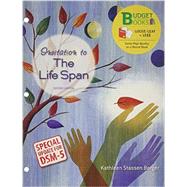
Kathleen Stassen Berger completed her undergraduate education at Stanford University and Radcliffe College, earned her M.A.T. from Harvard University and an M.S. and Ph.D. from Yeshiva University. Her broad range of experience as an educator includes directing a preschool, teaching philosophy and humanities at the United Nations International School, teaching child and adolescent development to graduate students at Fordham University, teaching inmates earning paralegal degrees at Sing Sing Prison, and teaching undergraduates at both Montclair State University and Quinnipiac University. She has also been involved in education as the president of Community School Board in District Two in Manhattan.
For over three decades, Berger has taught human development at Bronx Community College of the City University of New York. The students Kathleen Berger teaches every year come from diverse ethnic, economic, and educational backgrounds representing a wide range of interests and consistently honor her with the highest teaching evaluations.
Berger’s developmental texts are currently being used at nearly 700 colleges and universities in a dozen countries and in five languages. Kathleen’s research interests include adolescent identity, sibling relationships, and bullying. As the mother of four daughters, as well as a new grandmother, she brings to her teaching and writing ample firsthand experience with human development.
The New copy of this book will include any supplemental materials advertised. Please check the title of the book to determine if it should include any access cards, study guides, lab manuals, CDs, etc.
The Used, Rental and eBook copies of this book are not guaranteed to include any supplemental materials. Typically, only the book itself is included. This is true even if the title states it includes any access cards, study guides, lab manuals, CDs, etc.